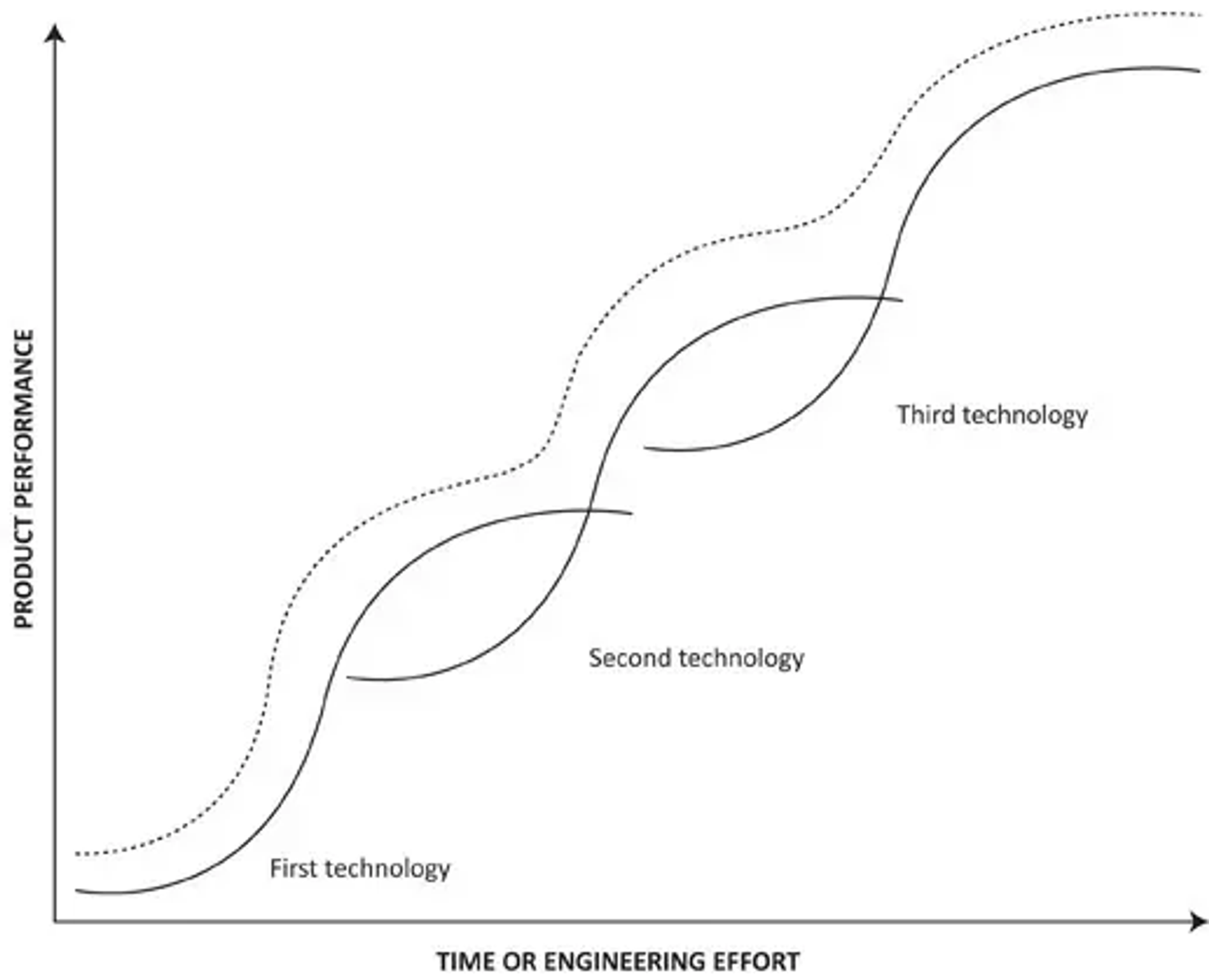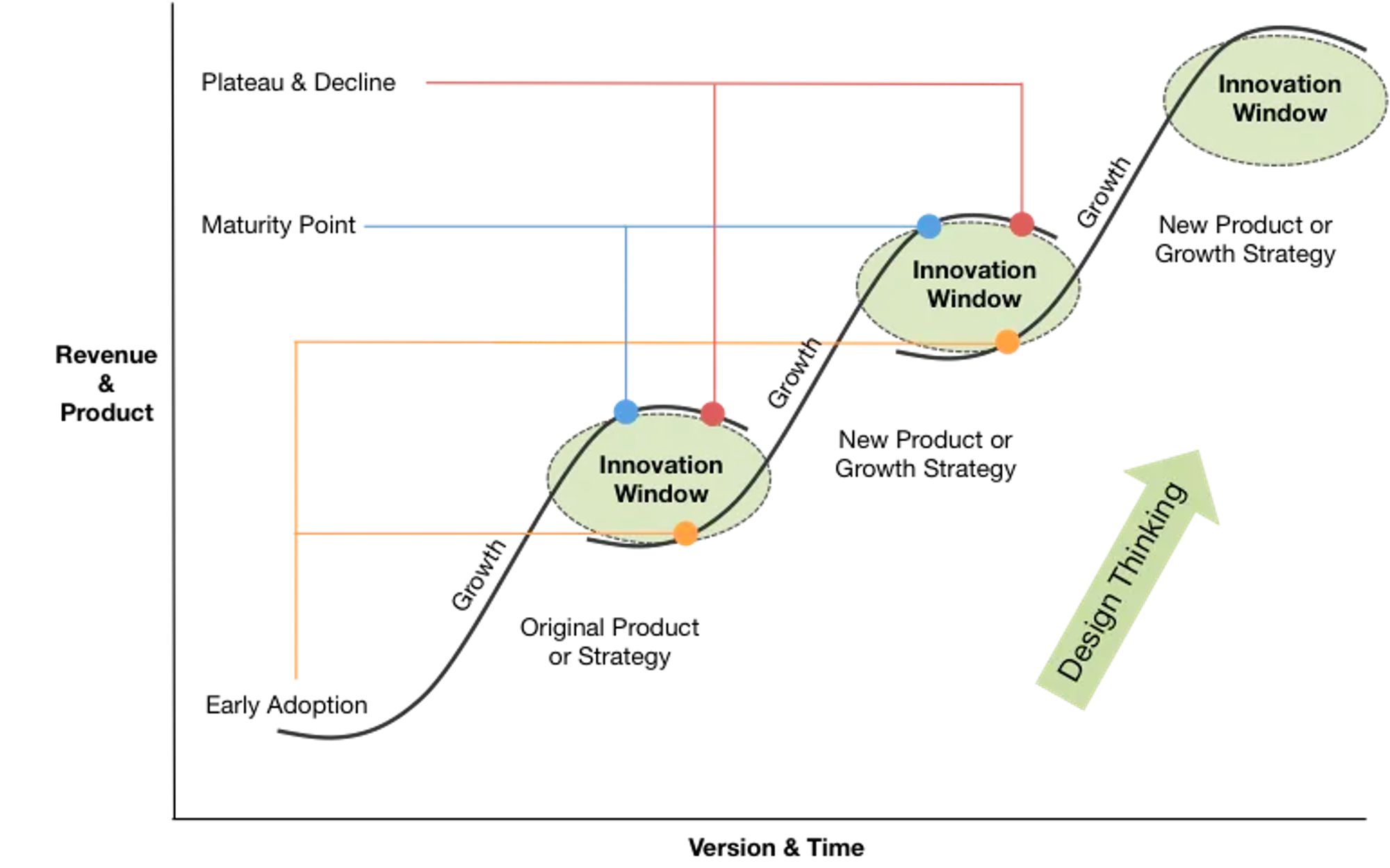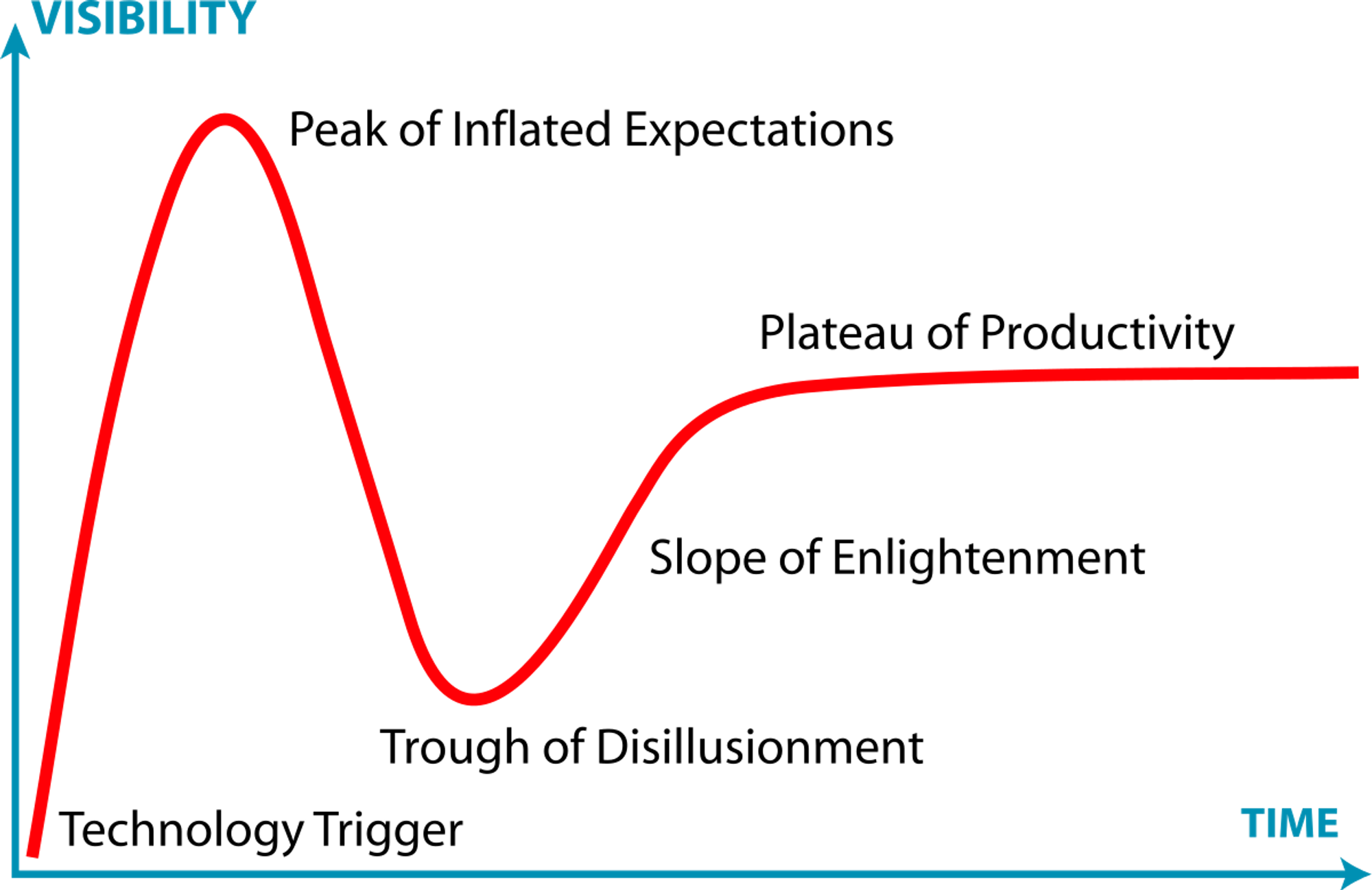Web3 is all about innovation and hype, so here are two conceptual models worth learning: Innovation S Curves and Gartner Hype Cycles.
Innovation typically follows an S curve pattern.

When a new technology comes along, it creates enormous progress and enormous opportunities, often driven by just a few specific teams.
the quality of new projects > the quantity of total projects.
Everything connected to this tech then goes up, quite rapidly.
This is because it happens at multiple levels. So while a specific technology increases a specific performance, the entire ecosystem benefits:
- more related inventions appear
- number of investors goes up
- company profits go up
- company hires go up
- research and development goes up
When growth really starts taking off, copying becomes omnipresent. This is because once a successful trend has been identified, it’s easier to jump on the bandwagon than do anything new. This is especially true in crypto because most everything is open source.
quality of new projects < quantity of total projects.
Once the money machine takes over, there is no incentive for creativity.
In fact, it is literally disincentivized because people prefer to use what they already know. If you are a builder, then you can’t afford to waste time making something that might not work, when you know you can fork a successful project, and start marketing it straightaway. As I heard someone say recently: “move slow, die a fast death”.
Greed is a powerful motivator.

Everything goes up…until it doesn’t. At that point, the industry/product/business is considered to have reached a “maturity” stage. Then everything levels off and even starts to decline a bit.
It’s at this point that a new, different, technology starts to build on the previous one and a new growth spurt begins.
But importantly; the periods of innovation are actually when the mania is dying off from the previous new technology. This is the “innovation window” where teams are typically working on hard problems that they just can’t monetize straightaway. It takes a lot of effort and time to engineer new solutions.
Gartner Hype Cycles
A hype cycle is another graphical representation of the lifecycle of a new technology. It was first introduced by Gartner in 1995 and is used to describe the maturity, adoption, and social application of specific technologies.
Whereas the innovation S curve refers mostly to a technology or product performance, the Hype Cycle refers more to how that innovation is perceived in wider society.

The hype cycle consists of five stages:
- Technology Trigger: This is the stage where a new innovation is introduced to the market. At this stage, there is a lot of excitement and hype surrounding the technology.
- Peak of Inflated Expectations: In this stage, the technology is overhyped, and people have unrealistic expectations about it. This is the stage where a lot of companies invest heavily in the technology.
- Trough of Disillusionment: At this stage, people start to realize that the technology is not as great as they thought it would be. There is a decline in interest, and some companies may even abandon the technology.
- Slope of Enlightenment: In this stage, people start to understand the real potential of the technology. Companies that have stuck with the technology start to see some benefits.
- Plateau of Productivity: This is the final stage, where the technology becomes mainstream and is widely adopted.
Understanding where you are in the cycle can help you manage expectations and plan your timeline. There is nothing wrong with capitalising on an existing mania. But you ought to know which is which and honestly assess your efforts.
Ride the excitement, but don’t get swept away by it.
Copy if you must, but Steal like an Artist.